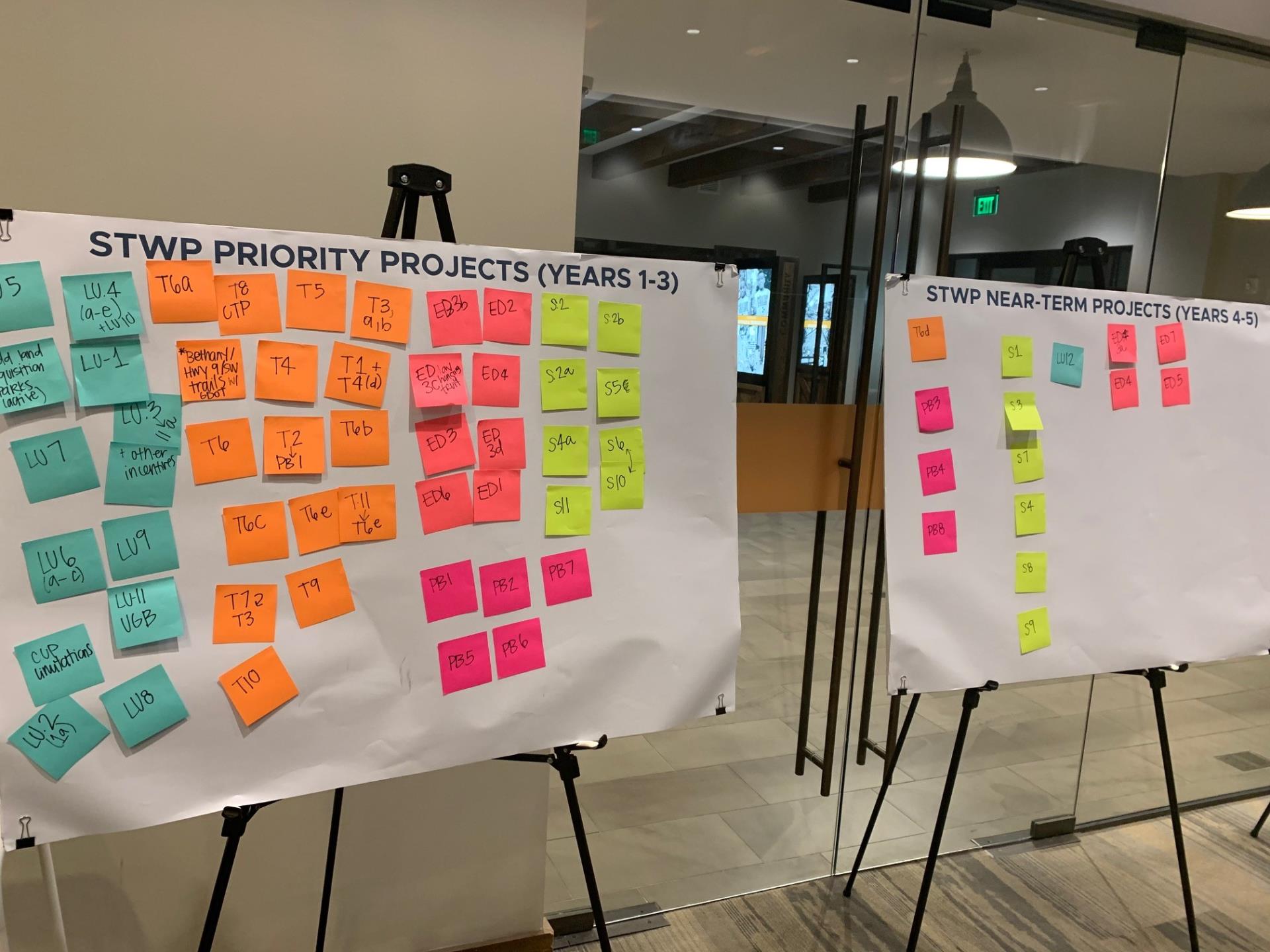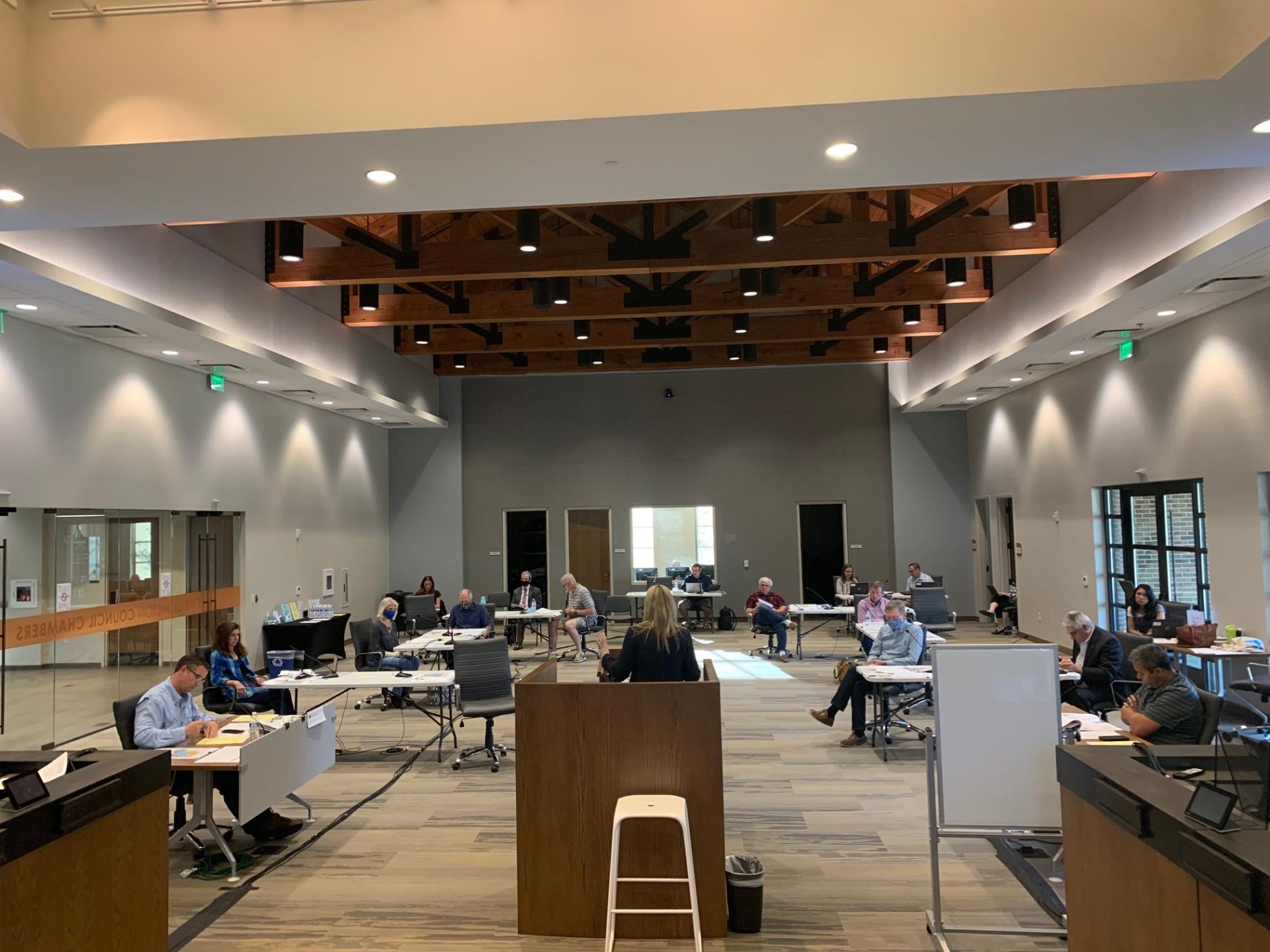 Milton’s Comprehensive Plan Advisory Committee on Thursday drilled down on policy recommendations tied to the City's 2040 Comprehensive Plan -- outlining the utility and timing of dozens of specific initiatives aimed at addressing a wide range of goals from incentivizing large lots, to Milton-attuned economic development, to branding and placemaking efforts, and much more.
Milton’s Comprehensive Plan Advisory Committee on Thursday drilled down on policy recommendations tied to the City's 2040 Comprehensive Plan -- outlining the utility and timing of dozens of specific initiatives aimed at addressing a wide range of goals from incentivizing large lots, to Milton-attuned economic development, to branding and placemaking efforts, and much more.
As with other CPAC meetings, the May 10 session featured extensive back-and-forth discussions sandwiched around brief set-up presentations. Members began by looking at two pockets of Milton that have been brought up as possibly meriting zoning changes.
- The first involved part of Cogburn Road, where some land owners had requested a shift from T-2 to a more dense T-4 zoning category. A resident there and lawyer representing another property owner noted this section borders T-4 on one side, saying its current more rural designation makes it difficult to market and sell in a more dense area with several schools and considerable traffic. CPAC members recommended against the change, noting that this area also borders a City-purchased greenspace and stating it may be a good place to look at add more park space.
- The next was a sliver along Bethany Bend that – unlike most everything around it – is not covered by the Deerfield Form-Based Code (which would give the City more control over its architectural, look, feel and density, even if no one is proposing changing the current density). CPAC members supported having this area, which includes four parcels, under the Deerfield Form-Based Code.
Ron Gilbert, a CPAC member and Planning Commission member, further requested that the City explore revisiting how the Community Unit Plan (CUP) concept is approached in Milton. After sentiment that this was never meant for smaller developments, as is more frequently being requested, CPAC members rallied behind his idea.
Next came a discussion about whether it made sense for Milton to develop “Urban Growth Boundaries" that define areas that can have more dense developments and, in turn, can help areas outside those boundaries retain a more rural, natural feel. Much of the territory that would be covered within an Urban Growth Boundary would mirror Milton's “sewer map,” since there are typically higher concentrations in places connected to sewer. But one exception mentioned Thursday was the 27-plus acres in Birmingham Crossroads.
After some back-and-forth focused on Birmingham Crossroads, CPAC members expressed support for exploring the development of “Urban Growth Boundaries” in Milton.
This led into the heart of the meeting: what specific things the City can and should do in the next five years (at least) to reflect priorities related during the Comprehensive Plan process.
 Launched last summer, the City has undertaken extensive efforts -- even amid a pandemic -- to solicit feedback from community members through surveys, online forums, informal pop-up events, and more to determine their ideal vision for Milton and what they'd like to happen to make that vision a reality. They have also listened intently to the questions, comments and recommendations of CPAC members during their now seven meetings.
Launched last summer, the City has undertaken extensive efforts -- even amid a pandemic -- to solicit feedback from community members through surveys, online forums, informal pop-up events, and more to determine their ideal vision for Milton and what they'd like to happen to make that vision a reality. They have also listened intently to the questions, comments and recommendations of CPAC members during their now seven meetings.
All that input and hard work has culminated in the development of dozens of proposed “short-term work programs” that were discussed Thursday. These touched on five broad categories:
- Land use
- Economic Development
- Transportation (including roadways, bicycling and trails)
- Sustainability
- Placemaking and branding (which was a new category that CPAC identified after the process began)
To see these proposed programs, CLICK HERE -- https://www.miltonga.gov/home/showdocument?id=4696 -- and scroll to pages 32 to 38 of the presentation.
CPAC members considered each of these proposed initiatives separately, then shared whether they thought they should be “priority projects” (to be pursued in the next 1-3 years), “near-term projects” (to be completed in years 4-5), “new projects” or “no longer relevant.”
 The group overwhelmingly supported the proposals, with all but a few being placed in the first two categories. (Most all the exceptions were because of merging or slightly rewording programs.) The vast majority of the recommendations were categorized as “priority” – meaning CPAC thought they were important and achievable enough in the next few years.
The group overwhelmingly supported the proposals, with all but a few being placed in the first two categories. (Most all the exceptions were because of merging or slightly rewording programs.) The vast majority of the recommendations were categorized as “priority” – meaning CPAC thought they were important and achievable enough in the next few years.
“This has got to be the most comprehensive Comprehensive Plan that the state of Georgia has seen,” CPAC Chair Todd Chernik told his Committee's members after this exercise. “Thank you for helping us through that.”
The fact these “short-term work programs” have been drafted, and received largely favorable reviews, is further proof that the entire 2040 Comprehensive Plan process is in its homestretch. Laura Richter -- a Planner and Project Manager from TSW, which has been working hand-in-hand with the City on this Comprehensive Plan – noted that the current draft is about 170 pages.
Yet there is still more work to be done, with several events on the immediate horizon. These include a briefing to City Council at its next meeting on May 10, another CPAC meeting (to dive deeper into the draft Comprehensive Plan) the evening of May 13, and an “open house” by City Hall where members of the public can come to learn more about the Plan and its work programs.
You can get details on these events, as well as learn more about Milton’s 2040 Comprehensive Plan, by going to www.miltonga.gov/ComprehensivePlan. This webpage also contains links to relevant videos and presentations from throughout the process.
As Chernik noted, the draft Comprehensive Plan remains a living document until late June – when the City Council will more formally review it. This will be followed by an official 30-day public comment period, then an expected final vote by Council in early August.